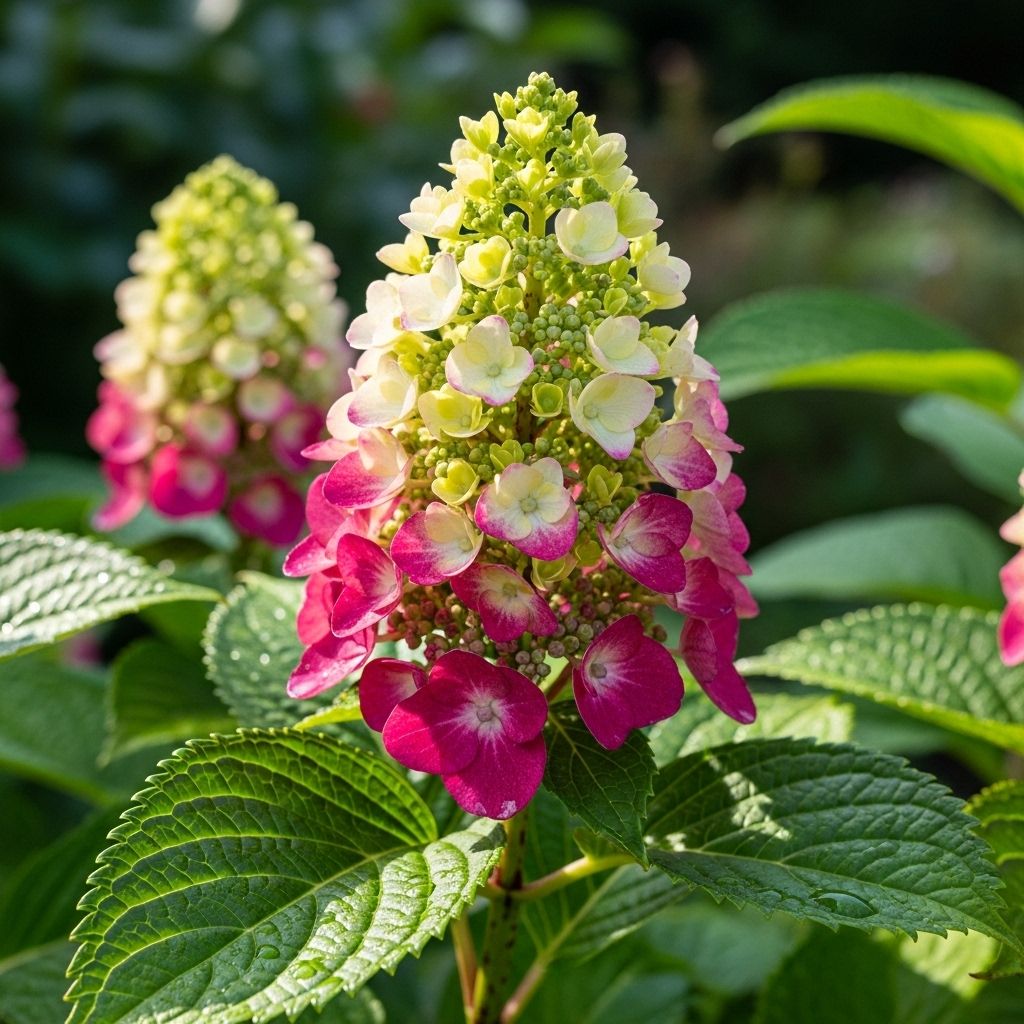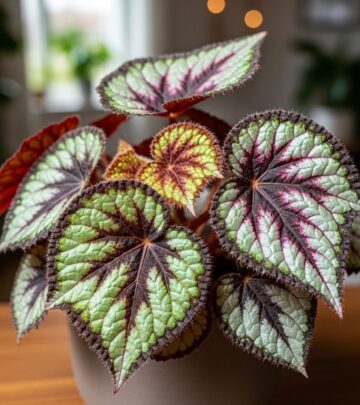Hydrangea Paniculata Care Guide: Simple Planting & Pruning Tips
Discover thriving secrets and expert tips to nurture stunning blooms all season long.

Image: HearthJunction Design Team
Panicle Hydrangeas: The Complete Guide to Hydrangea paniculata
Panicle hydrangeas (Hydrangea paniculata) are a beloved group of shrubs cherished for their showy, elongated flower clusters and reliable performance across a wide range of climates. If you’re seeking long-season blooms, easy care, and versatile landscaping options, panicle hydrangeas offer a wealth of possibilities. This comprehensive guide covers everything you need to know—including top varieties, planting tips, pruning advice, and design ideas—to make the most of these magnificent garden plants.
What Sets Panicle Hydrangeas Apart?
Panicle hydrangeas are instantly recognizable by their distinctive, cone-shaped flower clusters (called panicles), which are larger and more elongated compared to the globe-like blooms of mophead hydrangeas. These plants are celebrated for:
- Hardiness: thriving from zones 3–8.
- Sun Tolerance: more adaptable to full sun than most other hydrangeas.
- Color Transformation: flowers typically open white or greenish, then gradually turn pink or even red as the season progresses.
- Low Maintenance: forgiving with pruning and tolerant of varying soil types.
Panicle Hydrangea Flower Features
- Pyramid-shaped panicles: Large, upright clusters (often 6 to 18 inches long) create a dramatic floral display.
- Bloom Period: Typically from late spring or early summer through fall.
- Long-Lasting Blooms: Flowers persist well into autumn and make excellent dried arrangements.
- Progressive Color Changes: Shades shift from creamy white or lime to blush pink, deep rose, or even dusky red.
Compared to other hydrangea groups, paniculatas are highly valued for their robust performance and adaptability, making them a favorite among both novice and experienced gardeners.
Popular Panicle Hydrangea Varieties
Modern breeding has produced a dazzling array of panicle hydrangea cultivars. Here are some of the most popular and distinctive choices:
| Variety | Height & Spread | Flower Color | Key Features | Zones |
|---|---|---|---|---|
| ‘Limelight’ | 6–8′ H x 6–8′ W | Lime green to cream, aging to pink | Huge, upright blooms; striking in borders or as specimens | 3–8 |
| ‘Grandiflora’ (PeeGee) | 10–20′ H x 8–12′ W | White to pink | Tree-like size; classic panicle form | 3–8 |
| ‘Candy Apple’ | Up to 5′ H x 5′ W | Lime green aging to white | Compact; excellent for containers and small gardens | 4–8 |
| ‘Early Evolution’ | Up to 2′ H x 2′ W | Lime-white to dark pink | Very compact; unique flower form | 4–9 |
| ‘Razzleberri’ | Up to 4′ H x 4′ W | White turning bright pink | Robust, compact, all-summer interest | 4–9 |
| ‘Angel’s Blush’ | 8–12′ H | Pink | Abundant large florets; great for hedges | 4–8 |
| ‘Burgundy Lace’ | Varies | Cream to pink to burgundy | Striking late-season color change | Varies |
| ‘Phantom’ | Varies | White to rich pinks | Huge flowerheads; late-blooming | Varies |
Planting Panicle Hydrangeas
Successful panicle hydrangeas start with proper placement and preparation. Here are essential steps:
- Sun Requirements: Thrive in full sun to partial shade. More sun encourages more substantial blooms, though some afternoon shade is beneficial in very hot regions.
- Soil Preferences: Adaptable to many soil types, but prefer moist, well-drained soil.
- Spacing: Allow room for mature size—consult your variety’s specifications above.
- Planting Depth: Plant so the top of the root ball is level with the surrounding soil.
- Watering: Keep soil consistently moist, especially for the first year as roots establish.
Caring for Panicle Hydrangeas
Once established, panicle hydrangeas are among the easiest hydrangeas to maintain, but a few steps will help them thrive:
- Watering: Deep, regular watering is crucial during hot, dry spells, especially for newly planted specimens.
- Mulching: A 2–3 inch layer of organic mulch helps maintain soil moisture and regulate soil temperature.
- Fertilization: Feed with a balanced slow-release fertilizer in spring. Avoid over-fertilizing, which can lead to lush foliage but fewer blooms.
- Pest & Disease Management: Generally resistant, but occasional aphids or powdery mildew may appear. Treat as needed with appropriate methods.
Pruning Panicle Hydrangeas
Proper pruning encourages abundant blooms and maintains a tidy shape. Unlike bigleaf hydrangeas, which bloom on old wood, panicle hydrangeas bloom on new wood—so they can be pruned more aggressively:
- Timing: Prune in late winter or early spring before new growth begins.
- Technique: Remove any dead or weak stems, and cut back remaining stems by about one-third to one-half to encourage robust flowering.
- Shaping: For tree-form hydrangeas, prune to maintain a single trunk and open canopy.
Don’t be afraid—panicle hydrangeas respond well to pruning, even if you cut them back hard!
Design Ideas for Panicle Hydrangeas
The versatility and show-stopping blooms of Hydrangea paniculata mean countless ways to feature them in your landscape:
- Foundation Plantings: Their upright form frames house corners and porches beautifully.
- Hedges and Screens: Tall varieties such as ‘Grandiflora’ or ‘Angel’s Blush’ create privacy and seasonal interest.
- Specimen or Focal Point: Show off bold cultivars like ‘Limelight’ or ‘Phantom’ in a lawn island or central garden bed.
- Container Gardening: Compact varieties like ‘Candy Apple’ or ‘Early Evolution’ shine in large pots on patios and balconies.
- Mixed Borders: Pair with ornamental grasses, evergreens, or perennials for multi-season excitement.
- Cut and Dried Flowers: Use long-lasting panicles for fresh arrangements or dry for winter displays.
Frequently Asked Questions About Panicle Hydrangeas
Q: How much sun do panicle hydrangeas need?
A: Most panicle hydrangeas flourish in full sun (6+ hours) but will tolerate partial shade. In hot climates, provide some afternoon shade to prevent leaf scorch.
Q: When and how should I prune my panicle hydrangea?
A: Prune in late winter or early spring before new growth appears. Cut back last year’s stems by one-third to one-half to encourage larger, more prolific blooms.
Q: Do panicle hydrangeas change color by soil pH like bigleaf hydrangeas?
A: No, their flower color changes naturally through the season (from white or green to pink/red), and is not affected by soil acidity or alkalinity.
Q: Are panicle hydrangeas deer resistant?
A: They are not considered highly deer-resistant, though deer tend to prefer other plants; some browsing can occur in areas with high deer pressure.
Q: Are panicle hydrangeas suitable for cold climates?
A: Yes! Panicle hydrangeas are among the most cold-hardy hydrangeas, tolerating winter temperatures down to USDA zone 3 with minimal protection.
Top Tips for Stunning Panicle Hydrangeas
- Choose a location with ample sunlight and well-drained soil.
- Water deeply during dry spells, especially in the plant’s first few growing seasons.
- Prune annually in late winter or early spring for best flowering.
- Feed with balanced fertilizer once in early spring.
- Consider dwarf or compact varieties for small gardens or containers.
In Summary
Few shrubs match the sheer impact, reliability, and adaptability of panicle hydrangeas. Whether you crave dramatic summer color, need tough plants for challenging sites, or simply love cut flowers, Hydrangea paniculata delivers season after season. With the right selection, planting, and care, you’ll enjoy an ever-changing display of blooms from late spring until the first frost. Explore the world of panicle hydrangeas—and let your garden come alive with their spectacular, enduring beauty.
References
- https://www.monrovia.com/be-inspired/best-panicle-hydrangea-varieties.html
- https://springhillnursery.com/collections/panicle-hydrangeas
- https://hydrangea.com/collections/panicle-hydrangea
- https://www.gardeningknowhow.com/ornamental/hydrangea/panicle-hydrangea-varieties
- https://countryhomeandblooms.com/panicle-hydrangea-varieties/
Read full bio of Anjali Sayee












